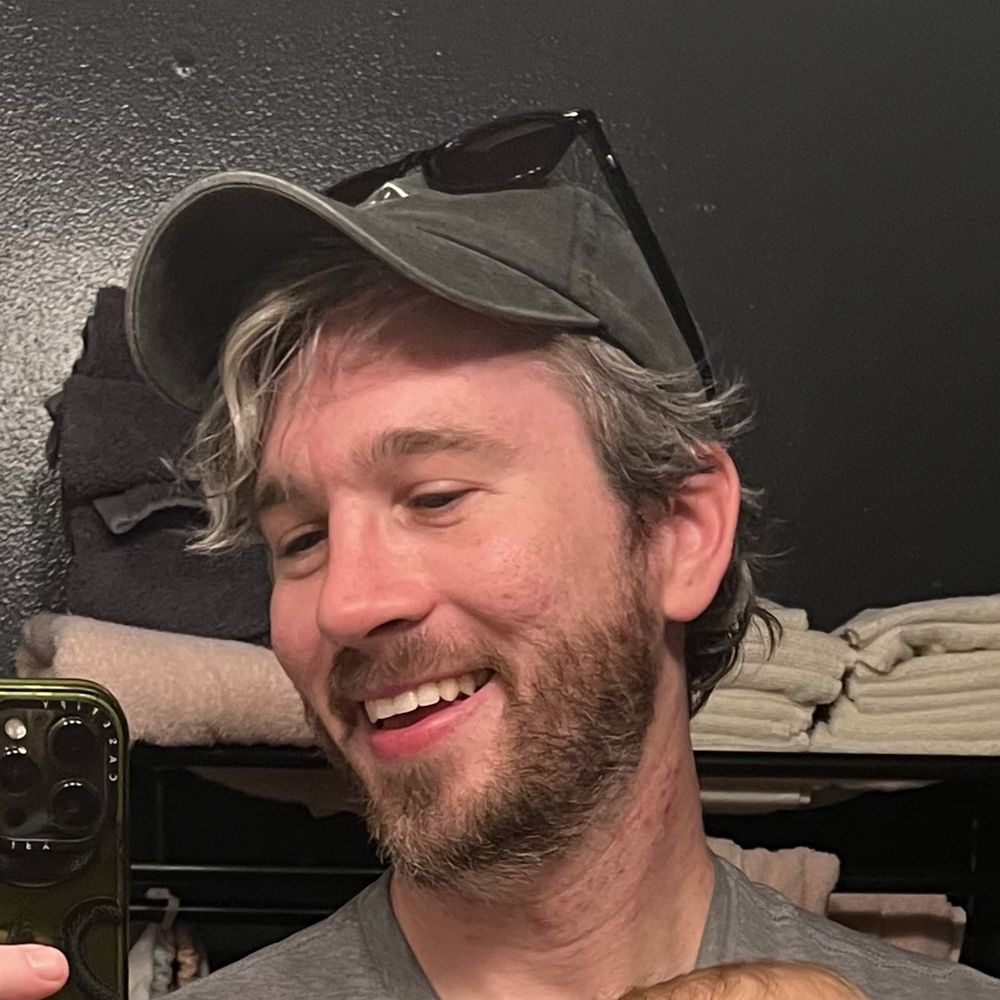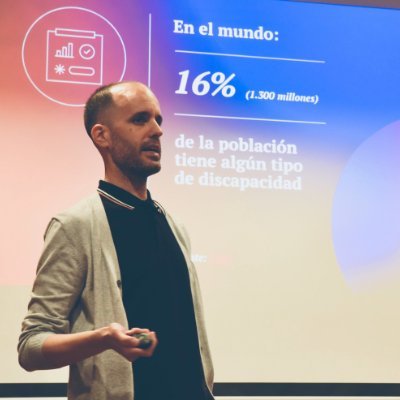15+ hours of (Captioned) Videos
The course contains a little over 15 hours of video content. (That’s two full-day workshops worth of content!) The course is English spoken, and closed captions are available in English.
Practical Accessibility is a self-paced video course designed to demystify web accessibility and equip you with the knowledge you need to confidently create more accessible websites and web applications today.
Accessibility can be straight-up difficult and intimidating. How do you get started? Where do you start? How do you know if what you’ve built is accessible? How do you find and fix accessibility issues when they come up?
I know how hard it is to find answers, and how easy it is to make mistakes—mistakes that have a direct, tangible impact on your users’ ability to use your websites and applications. I know how overwhelming and sometimes frustrating accessibility can feel at first.
But I promise you, accessibility isn’t always as hard as it seems, especially if you know where and when to start. And my goal with this course is to demystify it and make it friendlier and more approachable.
Practical Accessibility is the culmination and distillation of years of my experience in learning, developing, and teaching about web accessibility. It is a structured curriculum aimed to equip you with the foundational, evergreen knowledge you need to gain a deep understanding of accessibility.
Armed with this knowledge, you will be able to anticipate places where you may create barriers to access for people and avoid them in your work, as well as fix or remove existing barriers in your current projects. And you don’t need any prior experience in accessibility to get started!
If you’re a design engineer, front-end designer, a JavaScript engineer, or a back-end developer looking to gain a deep understanding of accessibility, then this course is for you.
If you're new to accessibility and looking to level-up, I strongly advise starting your journey with Practical Accessibility by @SaraSoueidan.

Homer Gaines
Front-end Developer and Certified Accessibility Professional (CPACC)
In this course, you will find answers to questions like:
Thank you so much for such an amazing course! There’s a lot about accessibility, like ARIA and WCAG, that have seemed so intimidating and overwhelming to me. Your course has demystified so much and it feels really empowering to learn about!
Joey Pearlman
UX Designer
The course currently includes more than 39 videos and over 15 hours of in-depth lessons.
The course currently includes:
That’s two full-day workshops-worth of content that you can access anytime, anywhere.
The topics covered in the course include:
Accessibility vs inclusivity vs usability and how people with disabilities access the web, and how this impacts how you design and develop your websites and applications.
The Web Content Accessibility Guidelines (WCAG). You’ll learn everything you need to know about WCAG and using its very helpful supporting documents in your day-to-day work.
The accessibility tree and accessibility APIs (AAPIs). Your secret accessibility weapon. You’ll learn everything you need to know about using it to find common accessibility issues in your everyday work.
Setting up your screen reader testing environment on your machine.
Semantic HTML. HTML is only as accessible as you write it. And choosing the right element is not always enough. You’ll understand why semantic HTML is important, and what it is exactly that makes it accessible, so that you can write it more intentionally. This section of the course includes several chapters, including chapters on HTML landmarks and heading structure.
Responsible ARIA. In this section of the course we’ll take a (very) deep dive into ARIA attributes, several chapters will cover what they are and why we need them, how to use them responsibly, when you need to use them, and, most importantly, when you shouldn’t.
Techniques for hiding content inclusively. We’ll cover all the different techniques for hiding content using HTML, CSS, and using ARIA, and you’ll understand the pros and cons of each technique so you can choose the appropriate one(s) for your use case(s).
Accessible names and descriptions. In this section of the course you’ll go through several chapters that explain the different techniques you can use to provide accessible names elements, what happens when you don’t provide one, and what happens when competing names are provided, as well as tips for concatenating accessible names using ARIA attributes.
Accessible images. Everything you need to know about writing effective alt text for images.
Accessible forms. In this section consisting of four chapters, we’ll discuss grouping and labeling form fields, providing instructional cues and descriptions, accessible form validation, and how to make form validation more efficient and helpful for your users.
Accessible notifications using ARIA live regions. We’ll discuss the native accessible notification system provided by ARIA, and how to use it responsibly in your Single Page Applications (SPAs).
Keyboard accessibility. This section includes chapters on providing navigational aid for keyboard users, designing WCAG-conformant focus indicators, and managing focus in custom interactive components using the roving tabindex technique.
Forced Colors Modes. You’ll learn how to prepare your content for forced colors modes, and we’ll discuss simple, effective tips for optimizing your content and ARIA widgets to ensure they remain usable.
The content of the course is very practical. You will get a tonne of actionable insights that you can take away and start applying in your projects right away to make them more accessible.
By the end of the course, you will be armed with the knowledge, techniques, and resources to:
I'd seen Sara’s presentations for years before, so I knew it would be great. It was an instant buy, and so worth it. I recommend the course to everyone I can. It's the best course I've seen on accessibility.

David Leininger
Staff Software Engineer for Design Systems and Accessibility at The New York Times
Since its launch, the Practical Accessibility course has been taken by designers, engineers, and educators from companies, state governments, and educational institutions around the globe






























I'm working on accessibility at Figma and your course has become our defacto suggestion for people who want to learn more themselves. On just about every accessibility-related internal doc there's a mention!

Drew Powers
Design Engineer + Accessibility at Figma and co-creator of Astro
The course contains a little over 15 hours of video content. (That’s two full-day workshops worth of content!) The course is English spoken, and closed captions are available in English.
The content is available in two formats: video and text. If you prefer text over video, you can read the course and still get everything out of it that you would get from watching the videos. It’s like having your own online accessibility book / reference!
Read the course in a font face optimized for legibility and accessibility. And customize your reading experience by switching between a light mode and a dark mode at your convenience.
This course is a one-time purchase. Once you buy it, it’s yours forever. You’ll also get free access to content updates, as well as all new content that will be added to it in the future.
Take this course in your office, at home, or on-the-go. Go through the course content at your own time and your own pace. Binge watch the videos in one go, or watch them over the course of days or weeks.
I curated a selection of useful accessibility documentation, checklists, cheatsheets, helpful tools, and resources for you to have handy and use in your day-to-day work.
When you buy the course, you’ll get a complementary, 6-months unlimited trial to Assistiv Labs—“The Browserstack of accessibility testing” —to start testing your work with more screen readers inside your favorite modern browser. You can activate your trial whenever you're ready to start testing.
You’ll also get a complementary, 60-days full-featured trial, and a 20% recurring discount after that, for Polypane—the stand-alone browser and devtool for web developers. Polypane contains a lot of different features that will help you test and improve the accessibility of your web pages.
You’ll acquire deep, evergreen knowledge and skills that you can apply today and in the future to make your digital products and services more accessible to people with disabilities.
This is by far the best accessibility course I've ever taken. It's very thorough and extremely well explained. If you have an education budget at work (or if you don't but have the funds to buy it personally) you can't go wrong with Sara's course. It's worth every penny.

Emma Dawson
Full stack software developer
If you are in a financial position to do this, this is some of the best money you can invest in your education and the betterment of the web for you and everyone else.
Like Nike says, Just do it!

Schalk Neethling
Front-end engineer
Get the entire course content, plus all future content updates.
Buy once, access forever
Price shown in USD, and excluding sales tax.
With a team license, you can purchase multiple seats for all of your
team members. You will receive a bulk discount when you buy more than 4 seats. Each team member will have full access to the full contents of the course.Level up your entire team
Today I bought so many licenses for S-group people to study @SaraSoueidan ‘s “Practical Accessibility” course that I had to get the limit increased on my work credit card. [..] We had two developers with no accessibility experience try it out earlier in the year and the feedback was absolutely wonderful. I’m happy to be able to bring almost all of our teams along now.

Matthew Hallonbacka
Digital accessibility at S Group, Finland’s biggest retailer
My team have been really enjoying Practical Accessibility. I can really tell how much thought and hard work you put into the course, it’s really incredible. Also how digestible to content is since web accessibility is such a technical and nuanced topic. Only halfway through the course and don’t want it to end because I’m enjoying it so much! Thanks for all your hard work, it’s huge.

Chris Henrick
Software developer and designer engineer at Esri

I’m an award-winning independent inclusive web user interface engineer, author, speaker, and trainer. I’ve been working at the intersection of design and engineering for 10 years, and have been focusing on inclusive design and accessibility for more than half of that time now.
Over the past 10 years, I’ve led inclusive UI development for clients like Herman Miller, SuperFriendly, and Khan Academy. Since 2014, I have presented and delivered talks and keynotes at dozens of events worldwide, and have led workshops at conferences, as well as in-house for companies like Netflix, Telus, and the Royal Schiphol Group at Amsterdam Airport.
When I started with accessibility, I felt overwhelmed and wasn’t always sure where to look to find the information that I needed. I wanted to learn, but I needed direction.
You are here right now because you may be in a similar place to where I was a few years ago. Whether that’s the case or not, you’re here because you want to learn. You’re here because you are responsible and because you care. And this is why I have created this course.
I have distilled years of my work and experience into this course, in the hopes that it will save you the amount of time and effort that I had to spend when I was learning accessibility, so that you can spend that time and effort designing, building, as well as advocating for accessibility within your team and your community.
I hope to welcome you on board soon!
The Practical Accessibility course has been taken by government employees in the UK and Canada, web developers in Germany, UI/UX designers in France, university staff educators in Australia, accessibility specialists and consultants in the United States, and many, many more. Here's what some of them had to say about the course:
Thank you for putting this course together - it is by far the best I’ve ever been through.
I was so impressed with the organization of the course. It was well thought out and I felt the order of the chapters worked exceptionally well.
You dug into topics I thought I had a good handle on and provided context I didn’t know I needed! The chapter on semantic HTML was a prime example of this.
I appreciated the mix of learning modalities - I could watch the video and dig deeper into the material using the transcript. There is a wealth of information in there!
I loved, loved, loved the chickens joining in from time to time!
I’m sad that I finished the course… but wait - I can go through it again! 😉

Jill Bateman, CPACC
Digital Accessibility Coordinator, Ohio University, OIT Office of Information Security and Digital Accessibility
I am currently following your video course “practical accessibility” and am absolutely excited! This is “the missing manual” to accessibility. You are answering all my questions on accessibility that no website or book was ever able to answer before.
Your course is so incredibly well done, it’s worth every penny ten times. My colleagues by the way share the same impressions.
This - to me - is the by far best material about accessiblity that does exist. What you created there is really outstanding and not comparable to anything else on accessibility. I absolutely recommend it to everyone interested in accessibility on the web.

Roman Seidelsohn
Senior frontend developer at Springer Nature Digital in Berlin, Germany.
Practical Accessibility is one of the best courses I did lately. Going in I thought I knew a bit about the subject, but I knew nothing.
It was a humbling experience filled with laughs, facepalms, and the occasional rooster crow. If you feel lost when it comes to #a11y, this is the course for you.

Wout
Visual artist, designer, and coder, wout.codes
The best accessibility course I’ve taken so far. It teaches with great detail, knowledge, and reliability how we can tackle almost any situation we might have to resolve when generating HTML, CSS, and JS code. It’s well documented and offers high-quality demos and links. 100% recommended; it’s worth investing in the knowledge you gain.

Carlos Espada
Tech Lead at Product Hackers
Oh it was fantastic. I’m a big fan of Sara and despite having been in the accessibility space for several years now, I still learned a number of very helpful things! Sara’s incredibly well researched and it really shows in this course. I think this would uplevel an engineer way better than some of the other courses out there. She went deep into some important topics that other courses just skim over.
We are using [the course] as part of training in our Accessibility Champions program. 🙂
Juliette (Rapala) Russum
Senior Software Engineer and Tech Lead at The New York Times
I just finished what you called your “favorite chapter,” chapter 6, of Practical Accessibility. I wanted to let you know that the clarity and depth of what you are sharing are impressive and I am learning so very much. There is so very much more to accessibility than I ever could have imagined and you have made it, well, so very accessible.
Thank you for this excellent body of work. I plan to do a deep dive into several of my sites, starting with all of the html elements that I use and if I have used them correctly. I’ve already tried out VoiceOver to see what it does with my own site and I have some work to do. With the knowledge that I’m gaining from your course, I’m feeling more confident that I can get it done.

Bob Monsour
Web hobbyist and creator of the 11ty Bundle
At the risk of you having heard this a few times already 😉: I can’t tell you how much I appreciate your extremely valuable course. It has given me the confidence to work my way through the material, and over the last few months I’ve also been doing a course on accessible web design at the Johannes Kepler University in Linz/Austria. These two parts complement each other perfectly and I have recommended your course to my colleagues time and time again. Thank you for your prudence, your precision and your passion for the subject, I will take this as an example!

DI Birgit Riese
Freelance Web designer
Thank you for a wonderful course. I have enjoyed it very much, and I’m happy that I finally found an accessibility course that is actually practical. I have been searching for a very long time to find something like this, that really deals with how to and why you should build websites with accessibility in mind. Great explanations and great examples.
I’m a technical director at a web agency and I have already bought 4 seats for some of the frontend developers, besides my own. I have always had a lot of focus on web accessibility and I wanted our frontend team to get better at this, and I can say that they have learned a lot and we are now about to fix the accessibility on some of our big clients.

Bjarni Olsen
Technical director at AKQA Denmark
I was so glad when one of the developers on our team shared Sara Soueidan’s Practical Accessibility course with us. It turned out to be exactly the kind of hands-on, in-depth (maybe even more than I expected!) learning experience I was looking for.
While the course is primarily aimed at developers, I found it incredibly valuable as a UI/UX designer.
Would I Recommend It? Absolutely—especially if you’re a designer with some knowledge of HTML and CSS, and a basic understanding of JavaScript.
In short, Sara Soueidan’s Practical Accessibility course made me a better designer. It gave me a clearer understanding of what inclusive, accessible design looks like—and a better sense of how developers approach it too.

Helen Vintoniak
Designer at SilverOrange, “My Take on Sara Soueidan’s Practical Accessibility Course”
Just want to give a shout out to @SaraSoueidan and her Practical Accessibility online course. I have learned quite a bit from it and I constantly refer back to it as a reference. Very high quality production and packed with information. Well worth the money spent. And the IAAP will now give you 15 hours of CAECs for it, if you’re into that sort of thing.

Bruce B
Web Developer
I’ve only made it past the initial 10% of the course so far, but I can already tell how much care you’ve put into it. It’s very informative, incredibly impactful, and it feels like you’ve left no stone unturned. I’m very excited to keep going!

Mikaël Sévigny
Web developer, Government of Canada
We really enjoyed your teaching style. The fact that all the material was available in multiple formats (written, video, captioned) was fantastic. I especially liked how when presenting a new concept, you didn’t just tell people the right way to do things, you shared a lot of ways to address the problem, and the potential benefits and shortcomings of each. That aspect in particular helped my understanding tremendously.

Kai Pepler
UX Designer, Experience Design Group (EDG), Xerox Corporation
Sara’s practical-accessibility.today course is truly fantastic!
i don’t shill for very many things, but this one actually meets the high expectations i had. i paid out of pocket for this course and it was totally worth it

Mayank
Design engineer, Mayank.co
Sometimes you go through a course to learn what you need and then move on. It’s not the case here. Instead, this is much more like a favorite book worth picking up time after time. It’s an absolutely practical, approachable, and enduring reference. Sara’s insight and expertise have made me a better practitioner and I’m thankful for a resource like this.

Jeremy Elder
Staff Product Designer at Gitlab
Acabo de terminar el curso de accesibilidad de Sara Soueidan.
A diferencia de otros cursos, en el que siempre se hablan de las mismas cosas, en el curso de Sara es un no parar de aprender nuevas cosas y que debes practicarlo, probar, probar y probar.
Es la mejor inversión que he realizado por ningún otro curso. Totalmente recomendable.

Iván González Albizu
Web Designer, Capgemini
It was broken up into chapters so well, I really appreciated being able to tackle one subject at a time. Client work has been pretty hectic all year, so that extra forethought on your part made all the difference for me to be able to fit in some study time in small chunks over time. I also have been noticing lately that I’m part of the group of people that retains information better when I hear and read it at the same time, so the text content with each video really helped me too.
It was a great course that I’m really glad I took my time with, and I’m already planning on circling back to rewatch some of the chapters.

Steve Woodson
Web Developer (CPACC), Walnut Creek Creative LLC
As someone who has been hearing impaired since birth I always appreciate subtitles and written notes with good contrast. @SaraSoueidan’s accessibility course is really well done. Nothing is missing. Glad I preordered it.

Karim
Web developer
Started my Practical Accessibility course by @SaraSoueidan. Highly recommended.
I’ve been to Sara’s workshops before and always appreciated the dense amount of info, the quality and passion that transpire. This course is no different.
Inclusivity, usability and accessibility.

Ginestra Ferraro
UX/UI Designer
I found your course extremely helpful. I graduated from school in 2022 with a degree in Computer Science, specifically focused on HCI and UX design, but I found even with this formal education how to implement web-based software accessibly was never taught. Accessibility was always theoretical and touted at something we should be aware of but was never covered in depth in any of the (many) front-end or design courses I took. I found your course to be a great level of detail and very comprehensive of accessibility standards, patterns, and practices. […] I wanted to let you know that I thoroughly appreciate the course you have created.

Molly Pribble
UX Designer
I’m going through Sara’s course right now too and it’s definitely one of the most thorough and comprehensive I’ve taken. I’ve learnt so much, even about things I thought I knew pretty well.

Emma Dawson
Full stack software developer
I can’t begin to describe the amazing quality of @Sara Soueidan’s ‘Practical Accessibility’ course.
I knew a lot but still learnt a lot […] It’s rich, full of wisdom…and practical. So good!

Ahmed Khalifa
Digital Experience Manager
Yesterday I completed @SaraSoueidan’s Practical Accessibility self-paced video course. I recommend this to all web devs! I knew about some of the easy stuff like color contrast and header levels, but there is a LOT beyond that!

Ron Gilmour
Web services librarian, Ithaca College
I was lucky to get early access to the course, and I can say it’s the most comprehensive, easy-to-follow course I’ve seen. Sara has obsessed over every detail. It’s absolute gold.

Shaun Conner
Digital accessibility lead at UK Government Digital Service (GDS)
I love the way you explain everything so clearly, the text transcripts, the table of contents for each video, and the sequence you chose to present each topic.
Although I’m slowly marking the videos as complete, I can see myself returning to them later. It’s really evergreen material.
Andrea de Souza
Front-end web developer
Compré el early access y debo decir que vale la pena cada centavo. Si quieren aprender de ally, este es un curso muy completo.
Este curso soporta Purchase Parity Program, así que es asequible. De verdad no se van a arrepentir

Cristian Díaz
Front-End developer
@SaraSoueidan’s new accessibility course just launched. I got early access and can tell you it’s worth every penny. Accessibility is a broad topic, but Sara manages to give very practical advice for people doing the work of building digital products.

Jesse Gardner
Director, User Research at New York State Information Technology Services (NYSITS)
Sara’s course stands up as the best accessibility training I’ve done - it’s the course I recommend to anyone with learning budget.

Geri Reid
Lead Accessibility Specialist, Just Eat Takeaway.com
The best investment that I’ve made in a long time. It’s not easy to find courses with this quality.

Segundo Fdez
Designer, Sond3
Recommending practical-accessibility.today by @SaraSoueidan. Best introductory #a11y #webdev resource I come along so far.

Florian Geierstanger
Front-end developer
I am very impressed and grateful for the thoroughness, but very concise, explanations. Already, a couple chapters in, my existing accessibility knowledge is rapidly consolidating.

Chris Satchell
Experienced web developer at NVISION
I got a few chapters into this course today. I have not been disappointed!
Highlights of the first few hours include:
🔪 Sara’s enthusiam while slicing a precise line between semantics and accessibility
🐦 The accessibility tree diagram with feathery residents
🐓 The distant rooster providing a brief “VoiceOver”
[…] I knew a decent amount about web #a11y already, but there was loads @SaraSoueidan clarified in this course 💜 Such a great resource!

Oliver Boermans
Front end web developer
It is like having my personal Accessibilitv Wikipedia now! What a huge one!

Jan Persiel
Jan Persiel, UI/UX designer
I bought this course with my own money, so, #NotSponsored, and I can 200% recommend it to any developer who wants to start learning about accessibility.

Stephanie Walter
UX Researcher & Inclusive Designer
I’ve mainly been watching (and rewatching!) the sections on forms, and I think it has vastly improved the code I’m working on at the moment, which I am hoping will be a meaningful improvement for all of our readers. Still a long way to go, but Sara’s course is the perfect companion for my journey.
I think Sara really nailed the balance of sharing context, current state, the varying opinions on a matter, then a strong case for her own perspective and why. It’s so easy to start from that last point – but I really appreciate the effort that has clearly gone into providing context and extra details in a short, concise way.

Ben White
Head of Technology at Capital Brief
Practical Accessibility by @SaraSoueidan is such a comprehensive course. It deals with the intricacies of building accessible web pages and components. The lessons are very detailed and easy to understand.
Highly recommended!

Ochuko
Software Engineer
I’ve been watching @SaraSoueidan’s “Practical Accessibility” course for a while now and have learned a lot of new things. But the chapters on accessible form validation blew my mind. I always thought it would be enough to use the standard HTML5 validation. But there are so many more measures you could and even should take. 🤯 #accessibility.

Albrecht Köhnlein
Developer
Der englischsprachige, kommerzielle Kurs besteht aus aktuell 19 ausführlichen Kapiteln und will das Thema Barrierefreiheit im Web praxisnah, zeitlos und möglichst zugänglich erklären. Dabei vermittelt es Basiswissen zu (beispielsweise) zugänglichen Formiularen, Buttons versus Links, ARIA und Tastaturbedienung, betont die Wichtigkeit von semantischem HTML und bietet mit dem “Toolkit” einen Werkzeugkasten zum Thema an. Practical-Accessibility.today erreicht meiner Meinung nach seine gesetzten Ziele und ist als sowohl ausführlicher, wie auch gut erklärter Kurs und seine 399 Dollar auf jeden Fall Wert.

Marcus Herrmann
Freelance Web Accessibility Specialist (IAAP certified) and web developer
I have followed Sara’s work for a long time, and I am starting to appreciate the many years of wisdom and experience she has put into the course.
Sara has levelled up my web accessibility knowledge way more than I thought was possible, and this is one of the most rewarding courses I’ve ever taken. The high-quality content combined with a passionate teaching style makes this an absolute joy to go through.
One pleasant surprise was that I didn’t need to take endless notes because Sara has done that work already. The accompanying text includes code samples, links, and illustrations that make it easy to recap what I learned in the videos.
If you work on the web, your users will appreciate you taking this course. The theory is great, but that’s not all, as there’s a comprehensive set of actions that you can start applying to your websites right now. Thank you for this excellent course!

Umar Hansa
Web developer
Sara’s one of the people I look to and trust most when seeking advice about how best to build websites that work well for the widest audience possible. This is certain to be one of the absolute best ways to train yourself and your team how to build accessibly on the web.

Scott Jehl
Web developer
[Sara] is one of those people who has the discipline and eye to make everything they release of the absolute highest quality. It’s inspiring — and for that reason, I’ve already purchased access to this new course.
I watched Chapter 1 last night and, if it’s foreshadowing the rest of the course, my expectations have already been exceeded.

Jim Nielsen
Designer and Front-end Engineer, “Get You Some Practical Accessibility”
I am closely following developments and updates in Web platform features and browser support for these features and I'm periodically making updates to the course chapters when appropriate.
When you purchase the course, you will have access to a Changelog that includes a list of all relevant updates. And if you are enrolled in the course, you will receive future updates (and new chapters) for free.
Please note that to ensure the content of the course remains as practical as possible, I will only add new features to the course when they become stable enough to be used in real projects, or when you can use them as a progressive enhancement in your current projects.
I will make sure the course remains as relevant and valuable to your work for as long as I can maintain it.
The course is primarily aimed at front-end designers & developers, and JavaScript engineers, as well as back-end developers who fiddle with front-end code and want to make sure they do so in an inclusive manner. Whether you write your HTML or CSS yourself, or you use a JavaScript framework to produce them for you, you should ensure that the code that powers your websites and applications is accessible.
The content of the course is focused on technical accessibility requirements and implementations. It does not currently address visual UI/UX accessibility requirements (like typography and colors). But if you’re a designer who knows some HTML and CSS , this course can help you understand technical accessibility requirements and constraints so you can make more inclusive design decisions, as well as collaborate more efficiently with the engineers on your team (which may make you your engineering team’s favorite designer!) You’re the ideal audience of the course if you are:
Yes! The course is 100% beginner-friendly. I designed the course to be inclusive of individuals with little or no prior accessibility experience. So, you don’t need any prior accessibility knowledge to take it. That being said, the content of the course starts with the basics of each topic covered, and builds up to more advanced concepts. We will discuss different accessibility topics in-depth, and we will tackle some of them from angles that may be different from what you are used to. If you’re a beginner in accessibility, you will acquire the knowledge that will make an accessibility champion within your team. 🎖 And if you’re already comfortable with accessibility and just want a good refresher, I’m confident that you’ll find a lot of value in it, and you will probably even learn a few new things!Can I take this course if I am a complete beginner in accessibility?
You should have a basic knowledge of HTML and CSS to get the most out of the course. We cover high-level JavaScript functionality for some of the design patterns we will build. You should know JavaScript if you want to create some of the custom widgets yourself, but you don’t need to be proficient with JavaScript to follow along in the course.Do I need to know HTML, CSS, and JavaScript?
Yes, absolutely! The course is very practical (hence the name!). You will be able to take the knowledge and techniques you will learn and apply them in your own work right away.
The course is also framework-agnostic by design. We won’t use any JavaScript or CSS frameworks. So, you will be able to apply everything you learn to any web project, regardless of what frameworks or stack you’re using.
Will I be able to apply what I learn in my project(s)?
Yes. Once you’ve finished a chapter, you can manually mark that chapter as complete. We don’t automatically track your progress. I care about your privacy and understand and respect that everyone learns at their own pace, and some people sometimes need or want more time. And the last thing I want to do is to make you feel uncomfortable.
When you mark a chapter as complete, a visual indicator is shown for the chapter indicating that it has been completed, so you can get a clear overview of which chapters you have left by looking at the list of chapters on the course Chapters page.Can I track my progress as I go through the course chapters?
Yes! But the process is not automated yet. That is, the certificate is not automatically generated when you finish going through the course. The reason is that I am planning on extending the course’s content in the future. Automating the generation of the certificate of completion before adding the extra chapters to the course is a little tricky. If you need a certificate of completion to present to your boss at work, to include in your CV, or to share it with your friends on social media, or simply to feel good about your accomplishment, you can send me an email. Make sure to include your full name as you would like it to appear on the certificate.. Me or someone on my team will then generate the certificate for you (in both PDF and JPEG formats) and send it to you.Do you offer a certficate of completion?
Yes, the Practical Accessibility course is approved for IAAP Continuing Accessibility Education Credits (CAECs). After finishing the course, you can submit your certificate of completion for credits through the IAAP Portal. Because the course contains over 15 hours of video content, you should be able to request and earn 15 credits—that’s the whole year of credits for CPACC, and just a little shy of that for CPWA.Does the course provide Continuing Accessibility Education Credits (CAECs) for the IAAP CPACC/CPWA certifications?
Yes! To qualify for a student discount, you must be currently enrolled in a full-time or part-time educational institution.
Please email our support team proof of active enrollment, such as a student ID card or registration paperwork.
Do you offer discounts for students?
Yes! With a team license you can buy a number of seats to allocate to employees, friends, or anyone you’d like to support by gifting or donating the course to.
Seats are not transferable — they cannot be re-assigned once used.
Team packages will come with bulk discounts. Please note that due to their nature, refunds are not available for team packages.
Learn more about team packages. For enterprise licenses and/or in-house training, please reach out to sara@practical-accessibility.today for details.Can I purchase multiple licenses for my group or team?
Yes! You can do that by entering their email address instead of yours during checkout. When you do, they will receive an email to set up their account and access the course content. The only caveat here is that they will receive a copy of the purchase receipt, which will include the last 4 digits of your credit card if you’re paying by credit. And if you need a copy of the receipt, you’re going to need to ask them to forward it to you. If you (understandably) don’t feel comfortable with this, you can purchase the course using your own email address and email me yours and the other person’s email address. Please note that you cannot transfer your own license to someone else.Can I gift a license to someone else?
If you need to change your email address, you can do that by contacting my support team support@practical-accessibility.today. Please note that you cannot transfer your license to another person. If you need to set or change your password, simply request a new link from the dedicated form. Just enter the email address you registered an account with and you’ll receive a new link right in your Inbox. If you don’t receive a link or have any trouble accessing your account, don’t hesitate to reach out to us at support@practical-accessibility.today.Can I change my email address from the address I purchased the course with?
How do I set/reset my password?
After you go through checkout, you should get redirected to a Thank You page (not the Paddle thank you dialog). Once you’re redirected, an account is automatically created for you, and you should receive two emails in your Inbox: a purchase receipt from my merchant, Paddle, and an email with a link to complete and access your account. (If you’ve used a 100% discount to purchase the course, you will only receive the latter.) Check your email inbox for these emails, and make sure to check your Spam folder just in case they land there. If you don’t receive either of these emails or you have any trouble logging in, don’t hesitate to reach out to support@practical-accessibility.today and we will get back to you with assistance as soon as possible.I purchased the course. Now what?
If you need a refund for your purchase, you can reach out to my support team by email within 30 days after your purchase and let them know. When you do, make sure you provide your order number and/or billing email. We will ask you the reason why, but you will be eligible for the refund even if you don’t want to provide any feedback. No hard feelings.
When the refund is issued, you’ll get a refund confirmation email from our merchant, Paddle, and your course account will be deleted. We won’t keep any of your account information, so please keep a copy of your purchase and refund receipts in case you ever need them.
Please note that due to their nature, refunds are not available for team packages.What’s your refund policy?
Right after purchasing, you will be emailed a receipt/invoice from Paddle, our merchant. You will be able to edit the recipient details on the receipt/invoice and add your preferred name and address (and VAT number).
Will I get a receipt/invoice for my purchase?
Feel free to send it to support@practical-accessibility.today and I’ll get back to you as soon as I can.
I have a question not listed here 🤔